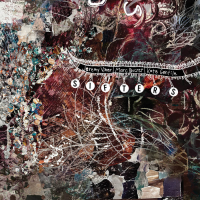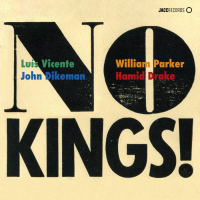Home » Jazz Articles » Album Review » The Rolling Stones: Blue And Lonesome
The Rolling Stones: Blue And Lonesome
Blue and Lonesome is not flashy in the least. It is, rather, pithy in its economy, the Stones approach mirroring the agony/ecstasy duality of the blues with deeply-felt performances radiating abiding reverence for the form while taking great joy in their chosen material. Perhaps deliberately, there's not a hint of humor here-the band is quite serious in their undertaking, perhaps more so than they would be with their own compositions-so it's no surprise there's nothing from the Buddha of the genre Muddy Waters. Instead, tunes appear here from Little Walter ("Just Your Fool"), Willie Dixon ("I Can't Quit You Baby") and Howlin' Wolf ("Commit A Crime"), right along side those from lesser known composers such as Otis Hicks ("Hoodoo Blues),
Since their early idolatrous days circa their second album, 12x5 (London 1964), (partly recorded in Chess Studios), the Rolling Stones have obviously learned much (more) about respecting the deep well-spring of emotion that is the blues, so none of the players involved call attention to themselves. Instead, all the musicians serve the songs, with the core quartet of vocalist Mick Jagger, guitarists Keith Richards and Ronnie Wood and drummer Charlie Watts integrating long-time bassist Darryl Jones, keyboardists Chuck Leavell and Matt Clifford and percussionist Jim Keltner for a concise succession of twelve tracks. No one shows off, least of all the guitarists, who solo with pointed emotion, strictly within the confines of the arrangements.
In fact, Jagger's performances on both harp and vocals end up being the most telling. With the hallmark instrument, his playing is raw yet purposeful, as on "Ride 'Em On down," while he never succumbs to caricature with his singing, instead phrasing with such purpose that, at times like "Little Rain," for instance, he approaches true eloquence. Eric Clapton displays similarly dignified virtues with his guitar playing on the pair of tracks where on he guests: on "Everybody Knows About My Good Thing" and "I Can't Quit You;" Slowhand lends a formality to the proceedings that otherwise remains subliminal within the spontaneous, low-key atmosphere pervading this project.
The garish-color scheme of the generic front cover art hardly communicates the concentrated energy with which the Rolling Stones inform Blue & Lonesome. The photos inside the digi-pak, in contrast, shine with the immediacy the band radiates. And that in turn renders the notes about each song's history scholarly but hardly academic. And while the absence of horns (which they have utilized so effectively in the past) is as notable as that of a lead vocal from Richards (de rigeur on stage and in studio), those very omissions provide ample reason for a sequel. Still, as sincere (and reasonable) as they might be in embarking on such a project, the Rolling Stones would be hard pressed to capture the proverbial lighting-in-a- bottle as they do here.
Personnel
The Rolling Stones
band / ensemble / orchestraAlbum information
Title: Blue And Lonesome | Year Released: 2016 | Record Label: Polydor Records
Tags
About The Rolling Stones
Instrument: Band / ensemble / orchestra
PREVIOUS / NEXT
Support All About Jazz
 All About Jazz has been a pillar of jazz since 1995, championing it as an art form and, more importantly, supporting the musicians who make it. Our enduring commitment has made "AAJ" one of the most culturally important websites of its kind, read by hundreds of thousands of fans, musicians and industry figures every month.
All About Jazz has been a pillar of jazz since 1995, championing it as an art form and, more importantly, supporting the musicians who make it. Our enduring commitment has made "AAJ" one of the most culturally important websites of its kind, read by hundreds of thousands of fans, musicians and industry figures every month.




















